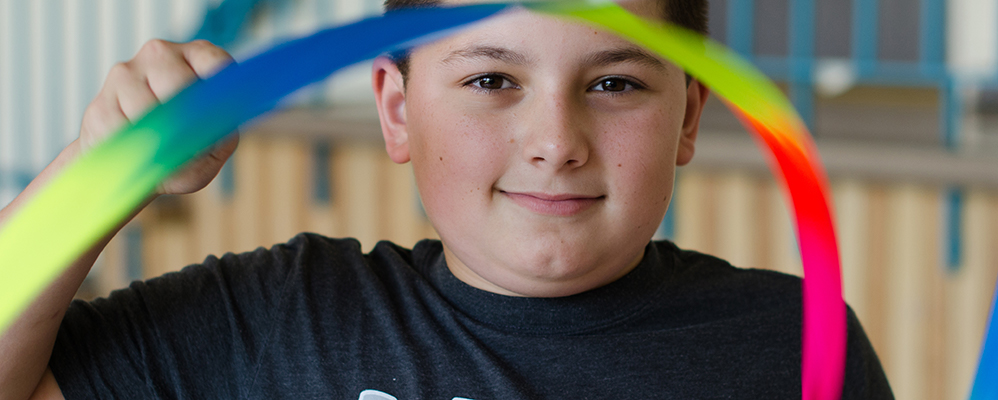Performing Arts Learning


What do students learn from
performing arts learning?
Learning Story
Through free and guided exploration and by applying the creative process to composition, students use elements of dance, drama and music to communicate feelings and ideas.
Sometimes called the ‘universal language,’ music is a social activity that promotes togetherness between individuals, cultures and nations. Play and music are important for the development of children’s mental capacity and intellect, helping to build language and mathematical skills. Music and drama help children to consider points of view, to learn empathy and express their feelings and relieve tension in an acceptable, instinctive way. Play and music create an imaginary world in which students can master a myriad of skills and develop an understanding of their environment that would otherwise be impossible. Play and music help to stimulate creativity.
Adolescents understand music at a deeper level. They can recite lyrics to hundreds of songs, compare and respond to rhythms, and identify genres and artists within genres. Their inclination for a distinct genre of music, and the movement associated with it, becomes strength for many.
Children love to move and to dance. Creative dance is both a physical activity and a form of self-expression. As children move in new ways, they learn there are multiple solutions to a question, a problem or a task. They learn important social skills as they work together. All children can use their bodies to move in various ways; dance can be adapted for children who are differently-abled. What’s more, dance helps students to be active and exercise their bodies.
Story drama is the dramatic retelling of a story or a book. When acting out favourite books or stories, children use more complex forms of language, consider and express their feelings, work co-operatively with others and articulate ideas in a creative and deeper way. As well, they have fun. By tapping into these inclinations, many students are able to use their strength in one area of learning to demonstrate their understanding in another area of study.
Before computers and multimedia and even before easy access to books, people used music, dance, and theatre to pass on information, traditions, customs and beliefs. They demonstrated their cultural beliefs.
At the end of a unit, whether in literature, history or geography, a cumulative activity should ask students to pull together many aspects and ideas about a topic. While a test lets an educator know if students have learned specific facts, the open-ended cumulative task lets the educator know the depth to which the student has assimilated ideas and connected to the topic.
Last year, I planned dance lessons during Asian Heritage month. The children were active and inventive as they engaged in the creative and composition processes of dance, and then conducted a critical analysis of the end performance.
However, as I began to plan for a similar unit this year, I reflected on the children’s participation in this planning format in the past. I realized that the important qualities of play — choice, freedom to choose, following one’s own path — had been missing. As a result, I chose to address the same learning expectations in a less teacher-directed way and instead allow the students more choice. School learning experiences can incorporate the important qualities of play.
As a whole group, the students and I discussed the main elements of a performance and the many roles and areas of expertise involved. As we delved deeper into the roles, we were able to identify clear categories and areas of specific interest.
I told the students that we would be planning performances for a school assembly. We decided to focus on roles associated with a dance performance: choreographer, composer and dance critic. We put the headings on large sheets of paper and mounted these to the walls. Each student had a sticky on which they printed their name. They posted their sticky under the heading that best reflected their skill. Next, we negotiated as a class to equalize the groups. (We knew we needed more dancers than critics for example.) We decided there would be four final performances but we chose six musical genres for research — Indian, Chinese, hip hop, African, classical and Caribbean.
Each of the specialty groups met together to research their roles. The dance critics researched dance reviews, the composers researched music appropriate to the genres and the choreographers researched the various dances online. The research phase extended over several sessions and included much sharing of ideas in small groups and in the whole group.
When the students felt comfortable with their research, we set up the charts again according to the music genres and they aligned and realigned their sticky notes with their names until each group had the right number of students. The students were then able to work with their groups to develop, rehearse and critic their performances.
The performances were a huge success. We celebrated together and took the time to reflect on the activity. The students were asked to submit a journal entry of their thoughts. Some of their reflections follow:
- I was kind of shy to let everyone know that I was a pretty good Indian dancer but the kids seemed to give me big props for what I did.
- I thought this was going to be a boring project but it was fun to be able to be the composition expert on my team and not actually have to do the dances. That might not have worked so well.
- I think I was a leader in my group but I usually am pretty shy about that. It just came easy this time because I knew what I was doing.



